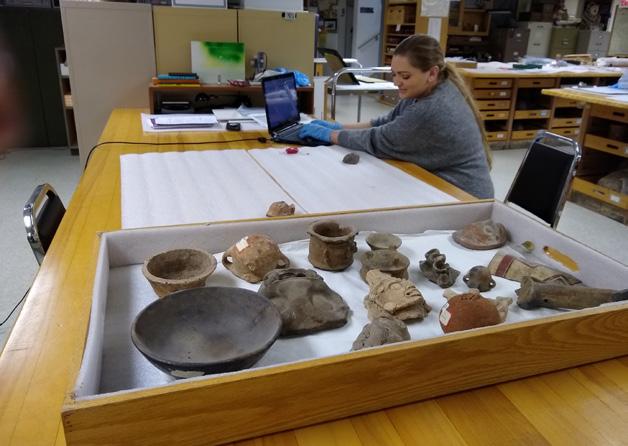
2 minute read
A Natural Symbiosis and Partnership: UWM Anthropology and the Milwaukee Public Museum
The Milwaukee Public Museum (MPM) and the Department of Anthropology have been linked in a fruitful symbiotic relationship for almost 60 years. MPM Anthropology curator Robert Ritzenthaler, who taught the first UWM Anthropology class in 1946, and Director Stephan Borhegyi established the Museum Studies Graduate Certificate as a joint program in 1963, now one of the oldest in the country. Several current faculty members serve as Adjunct Curators and over 50 graduate student thesis and dissertation projects have been completed on MPM collections since the Program’s inception.

Original Museum Studies graduate Certificate Brochure
In 1981, students from other departments were allowed to enroll in the Program as part of a new interdisciplinary certificate. Over 450 students from Anthropology, Art History, Biology, Geology, History, Art, Library and Information Science, Education, and Psychology have obtained the certificate along with their primary graduate degree, with many working in museums and related institutions around the country.
The emphasis was, and still is, on hands-on training: “Students absolutely require first-hand experience in curatorial and exhibit work. It is not sufficient to read about theory; one must have practical experience in application. There are literally hundreds [sic] of museum studies programs in the U.S., almost all of them consisting of a few courses taught by history or anthropology professors with very few including any work-related experience… experience is the key to obtaining employment” (Proposal Draft Summer 1981:2, 7).
In 1985, Nancy Lurie, past President of the American Anthropological Association and one of the preeminent anthropologists of her generation, who was a faculty member in the Anthropology Department before becoming MPM Head of Anthropology in 1972, stated:
(Letter from MPM Curator Lurie to UWM Anthropology Professors James and Goldstein dated 31, October, 1985, p. 2).

Anthropology and Museum Studies student Emma Eisner working on the Chajul site, Guatemala collection for her thesis project
Another shift occurred between 1996 and 2007; the program professionalized through the creation of a webpage, a new brochure, an internship contract, and an official listing as a transcript-designated program. Recently, the program expanded further and continues to attract students from around the country to Milwaukee.
Applied learning is a critical component for training 21st century emerging professionals. In the last 30 years, the MPM has had over 1,200 UWM students as interns, the majority from the Anthropology Department. Their contributions to exhibits, research, documentation, and public programs have impacted the MPM in small and large ways. This symbiotic relationship has been a source of strength and resilience for both institutions and they continue to thrive because of it.
By Bettina Arnold, Professor, Dept. of Anthropology






